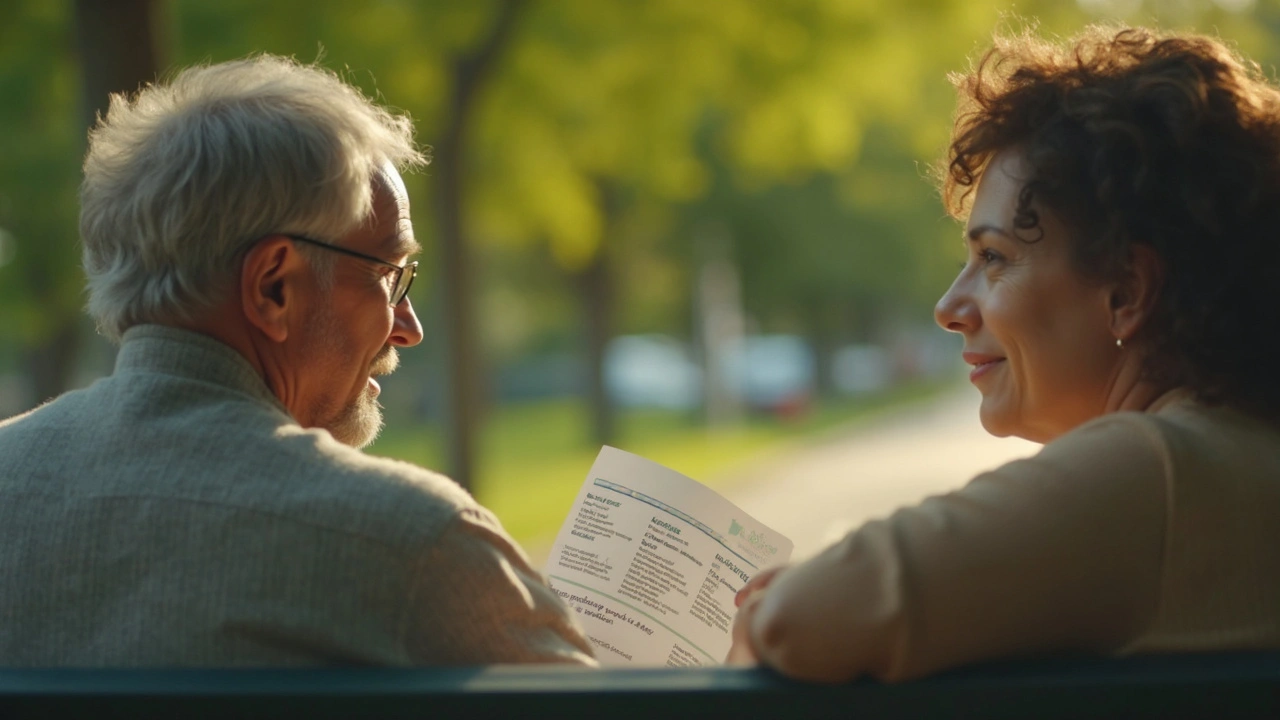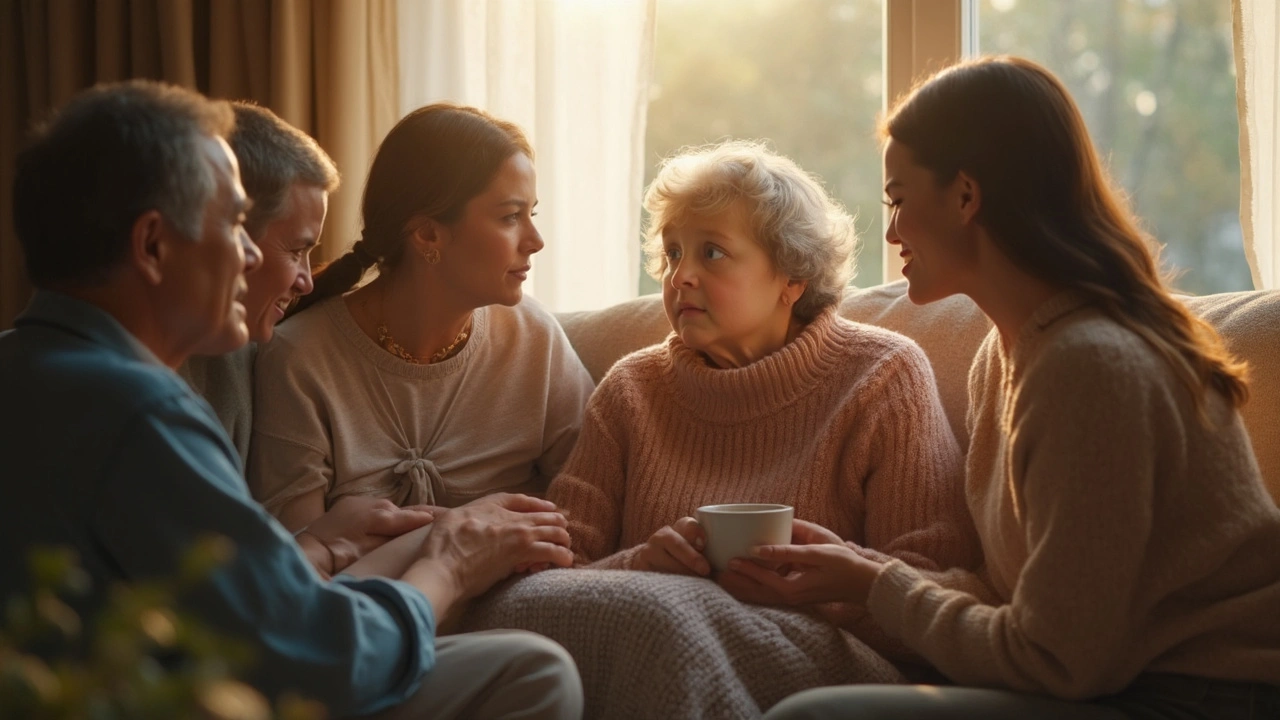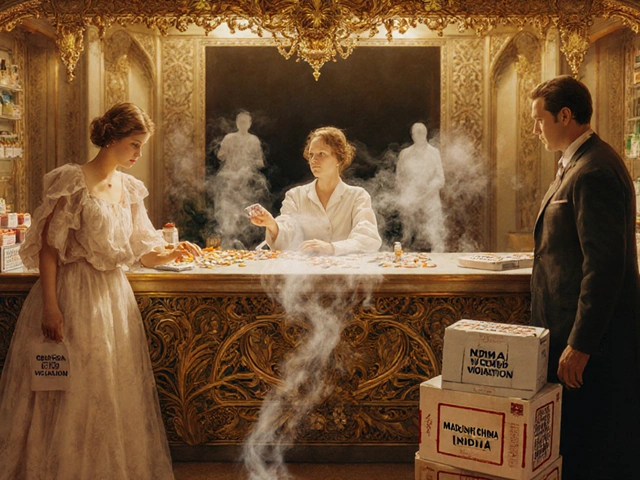Everything changes the moment you find out someone you care about has eye cancer. It's one of those gut punches few people see coming. Eye cancer doesn’t make the news like breast or lung cancer does, and you might go your whole life thinking about cataracts or glasses, not malignant tumors. Suddenly, you want to help, but how? What matters most now? What actually makes a difference for someone who’s coping with this?
People diagnosed with any form of cancer face a tidal wave of appointments, medical jargon, and fear. With eye cancer, it adds a new, raw layer: the fear of losing sight. Every time your loved one blinks or looks around, there’s that lurking anxiety: What happens if I don’t see like I used to? That’s a heavy load. The good news is you can step in and really make a difference. Your presence, routine acts of kindness, and the way you educate yourself can be game-changers.
The Unique Journey of Eye Cancer: Understanding the Diagnosis and Treatment Process
Eye cancer isn’t common. According to Cancer Research UK, less than 1 in 100 cancers diagnosed are found in the eye. The most common form, uveal melanoma, often pops up in people between the ages of 50 and 70. What makes it even trickier is most people don’t notice symptoms until the tumor’s actually affecting vision or causing other odd changes, like flashes of light, blurry spots, or even a dark patch on the iris that just won’t go away. Sometimes it’s spotted by an optometrist during a routine eye exam, and that can be a complete shock.
The rush of appointments kicks in quickly after diagnosis. First there’s the barrage of scans—MRIs, ultrasounds, sometimes a biopsy. You start to learn new anatomy: “choroid,” “sclera,” “retina.” Treatments depend on tumor size and location but might involve radiation therapy—using a tiny radioactive plaque sewn to the eye, laser treatments, surgery, or, in rare cases, removing the entire eye (enucleation). Each option comes with its own positives, risks, and life-changing side effects.
Your loved one isn’t just processing a life-threatening illness. They’re staring down complex decisions about keeping or losing vision. Studies from the American Cancer Society show survival rates for eye cancer are high if it’s caught early—about 80% five-year survival for localized uveal melanoma. But the risk of metastasis (especially spreading to the liver) means the journey doesn’t end with the primary treatment.
Why does all this matter? Because understanding these facts puts you in their shoes, at least a little. You’ll see why some days are full of “what ifs.” You’ll know why anxiety spikes with every new scan or test result, and why they might be hesitant to talk about the future. When you get the factual background, you don’t just nod sympathetically—you “get it” for real.
Here’s a table with some quick data so you can hang onto what matters:
| Fact | Details |
|---|---|
| Annual U.S. Eye Cancer Cases | About 3,500 |
| Common Forms | Uveal Melanoma, Retinoblastoma, Lymphoma |
| 5-Year Survival (Local) | 80% |
| Common Symptoms | Blurred vision, vision loss, dark spots, floaters |
| Average Age at Diagnosis | 55 years |
If you take just one thing from this section, let it be this: Eye cancer isn’t just a medical crisis. It’s a whole-life shakeup. Understanding that shift makes your support way more meaningful, starting from day one.

Everyday Support That Matters: Listening, Showing Up, and Being Adaptable
Honestly, navigating the day-to-day with eye cancer can be messy. Some mornings, your loved one’s ready to face the world, determined not to let cancer define them. Other days, the fear or side effects—like vision changes or pain—might knock the wind out of their sails. The big secret? The most powerful support isn’t grand gestures. It’s showing you’re present for the real, hard, and sometimes awkward bits.
Let’s talk about what that looks like. First, get comfortable with silence. Most people want to help by offering advice or trying to “solve” the cancer. But what’s actually helpful is honest listening. Let them vent, cry, yell, or sit quietly. You don’t need the right words—just openness. A 2020 survey in the journal Psycho-Oncology found that cancer patients rate listening and consistent presence as the top support behaviors, above anything practical.
The next big one: help keep their routines flexible. Eye cancer appointments may come up with almost zero notice. Treatments like proton beam therapy or surgery mean whole days (or weeks) get disrupted. If you can step in to help with kids, pets, food, rides, or even just “Hey, I’m grabbing groceries—what do you need?”—that’s gold.
Don’t underestimate how small changes around home can ease their load. Is the lighting safe and easy to see? Are tripping hazards cleared out? If vision’s changing, can you label spices or organize the fridge so they don’t have to hunt for things? These things don’t take hours but deliver huge comfort. If technology’s needed (maybe bigger-font devices or a screen reader), offer to set it up. Learning these adaptive tools can take time, and it’s less daunting with a buddy.
A key tip: ask before assuming how to help. Sometimes people just want someone to hang out and do normal things—watch terrible TV, go for a walk, have coffee, joke around. Cancer doesn’t erase the rest of their personality. Keep up the same hobbies when you can. If they need space, respect it, but don’t pull away so far they feel forgotten. A group text of silly memes is sometimes worth more than a fruit basket.
Every person handles cancer differently, and especially with eye cancer, emotional swings are normal. If depression or high anxiety sticks around, encourage professional help—it’s never a sign of weakness. And if you’re running low yourself, tag in other friends or family; supporting someone with cancer is a team sport, not a solo job.
If you’re trying to keep all this straight, here’s a cheat sheet of ideas.
- Offer specific, doable help—“Can I drive you to the eye doctor Monday?” beats “Let me know if you need anything.”
- Stay consistent with check-ins, even after the first diagnosis hype fades.
- Prepare for shifts in mood and energy; be patient if plans change.
- Help manage logistics—appointments, meds, rides, or dealing with insurance.
- Do fun stuff together, not just “cancer crisis” tasks—movies, music, a walk.
- Adjust lighting and rooms, label important things, and talk about adaptive tools only if wanted.
- Encourage connecting with others who’ve been through eye cancer—peer support groups help way more than people think.
Nobody gets a “supporting loved one with eye cancer” handbook. What matters most is showing up again and again—adaptable, kind, and unafraid to ask what your loved one finds most helpful.

Education, Advocacy, and Empowerment: Making an Invisible Illness Visible
If you’re really committed to supporting your loved one, go further than just the basics—become a quiet powerhouse of information and empowerment in their corner. Cancer care these days is a maze of paperwork, appointments, insurance headaches, and doctor-speak. There isn’t a ton of eye cancer research in the news, and people often feel isolated fighting something hardly anyone’s heard of. That’s where you can step up.
Start by getting informed about current treatments and side effects. Whether it’s reading through the last few months of the National Cancer Institute’s updates or browsing patient forums, you’ll find nuggets that instantly make you a better advocate. For instance, did you know that for small uveal melanomas, radiation is usually favored over surgery so the eye can be saved and vision loss is minimized? Or that immunotherapy, which has shaken up the melanoma world, still has only limited results so far for eye tumors? If you can keep up with real, factual details, you can flag what’s normal and what might signal a complication worth calling the doctor about.
It also helps to get savvy about how cancer programs work. Hospital social workers or oncology nurses can be goldmines of info for financial support or vision rehab. If your loved one is overwhelmed by forms, tax stuff, or disability paperwork, your extra set of eyes can spare them hours of frustration. Tracking appointments, remembering doctor names, taking notes during visits—these “background” tasks keep things running.
If your loved one wants, help them connect with foundations or charities. In the U.S., groups like Ocular Melanoma Foundation or the American Cancer Society do more than just research. They organize meetups, counseling, and sometimes even funding for adaptive equipment. If your person feels uncomfortable talking about their diagnosis, it’s your job to make sure their wider circle knows—because eye cancer thrives in silence and misunderstanding.
There’s a ripple effect to eye cancer that’s easy to miss. Some folks feel awkward about the word “cancer” when it’s not visible to others; others worry about explaining vision loss—or what an eye patch means in the workplace. You can boost their confidence by learning the ropes yourself. For example, get familiar with ADA protections in the U.S. if work adjustments are needed, or research the process for vision disability registration. Even just knowing what a white cane means can make a difference in conversations with bosses and teachers.
Don’t forget the emotional empowerment part. Sometimes that’s as simple as reminding them of progress made—“Hey, you made it through your radiation series when you thought you couldn’t”—or helping them plan trips or activities that don’t center around cancer. Reinforcing their ability to keep living life, even if it’s in new ways, matters way more than any pep talk.
Here’s a starter list of advocacy and empowerment tips:
- Stay curious and updated about eye cancer research but only share what’s uplifting or practical.
- Help organize paperwork, appointments, insurance claims, and build a folder or notes system that’s simple to share with doctors.
- Find and bookmark the best patient support groups or forums—they’re often full of hacks and hope.
- Encourage your loved one to take part in care decisions; doctors work magic, but nobody knows what works day-to-day better than the patient.
- Explore vision rehab and low-vision resources if sight loss is happening. Early adaptation makes life easier.
- Help educate friends, workplaces, or schools about eye cancer so your loved one never feels “othered.”
- Look for local or online events—fundraisers, awareness days, talks—and involve your loved one only if they’re up for it.
- Ask your loved one what their goals are for post-treatment and brainstorm real ways to make them possible.
Being there for someone with eye cancer isn’t about getting every detail right. It’s about doing your best, learning as you go, and bringing a stubborn kind of hope even on the rough days. With the right facts, a lot of grace, and good humor, you’ll help make an invisible fight a little less lonely and a whole lot more possible.







Rekha Tiwari
June 29, 2025 AT 11:15Leah Beazy
June 29, 2025 AT 20:11John Villamayor
July 1, 2025 AT 03:35Jenna Hobbs
July 2, 2025 AT 19:06Ophelia Q
July 4, 2025 AT 13:14Elliott Jackson
July 4, 2025 AT 18:16McKayla Carda
July 4, 2025 AT 23:28Christopher Ramsbottom-Isherwood
July 6, 2025 AT 01:08Stacy Reed
July 6, 2025 AT 20:05Robert Gallagher
July 8, 2025 AT 05:08Howard Lee
July 9, 2025 AT 06:21Nicole Carpentier
July 11, 2025 AT 02:29Hadrian D'Souza
July 12, 2025 AT 10:11John Villamayor
July 14, 2025 AT 02:08